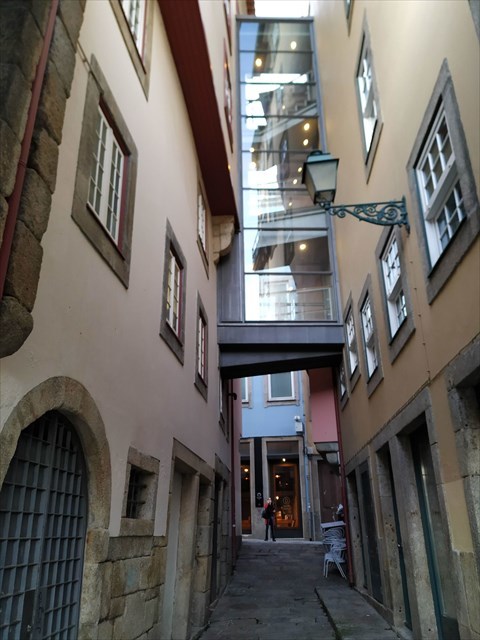Esta simples cache tem como propósito dar a conhecer UM LOCAL ESPECIAL • Construído em 1772, pelos moradores do Postigo das Virtudes, foi substituído pelo actual nos fins do séc. XVIII, com elementos neoclássicos. • Vem conhecer e desfrutar!
[ING] This simple cache has the purpose to make known A SPECIAL PLACE • Built in 1772, by residents of Postigo das Virtudes, it was replaced by the current one at the end of the century. XVIII, with neoclassical elements. • Come and enjoy!

De todas as passagens de serventia que teve a muralha fernandina, num total de 18, entre portas e postigos, resta hoje apenas o Postigo do Carvão, um dos nove que existiram na zona da Ribeira, voltados para o rio. Ligava o Cais da Estiva (ou da Alfândega Velha) à Rua da Fonte Taurina. Devido às obras efetuadas no local, ao longo dos anos, este postigo está hoje pouco visível. No interior, vêem-se ainda os degraus de acesso à parte superior do muro, onde existiu outrora uma inscrição gótica que assinalava o facto de se ter encarregado um vedor de examinar as âncoras de Gaia, «para pôr uma cadeia e amarração», no ano de 1348, o que leva a concluir que a parte da muralha em que se inseria foi construída ainda no reinado de D. Afonso IV. Este postigo servia para dar entrada ao carvão que, extraído ou fabricado nas carboníferas de Gaia e Gondomar, era transportado em barcaças e descarregado num dos cais da Ribeira. Era o quarto postigo a seguir à Porta Nova (ou Nobre), no sentido do Leste, depois dos Banhos, da Lingueta e do Terreirinho. Seguiam-se os da Ribeira (mais tarde alargado em porta), do Pelourinho, da Forca, da Madeira e da Areia, seguindo depois a muralha pelos Guindais acima ![Clique para ver a imagem maior]()
/> />[ENG]
/>[ENG]
Of all the service passages that had a fernandine wall, a total of 18, between doors and shutters, today only the Postigo do Carvão remains, one of the nine that exist in the Ribeira area, facing the river. Link or Cais da Estiva (or Alfândega Velha) to Rua da Fonte Taurina. Allowed to the works carried out on the site, over the years, this wicket is barely visible today. Inside, it can still show access steps to the top of the wall, where there is a Gothic record company that points out the fact that it was authorized to use Gaia's anchors, “to use a chain and mooring”, not a year. 1348, which leads to the conclusion that part of the wall on which the door was built has not yet been reigned by D. Afonso IV. This wicket serves for the entry of coal, extracted or manufactured in the coalfields of Gaia and Gondomar, it was transported in barges and unloaded at the Ribeira pier. It was the fourth wicket to follow for Porta Nova (or Nobre), meaningless to the East, after the Baths, Lingueta and Terreirinho. Following in front of Ribeira, later Pelourinho, Forca, Madeira and Areia, then following a mural through the Guindais above